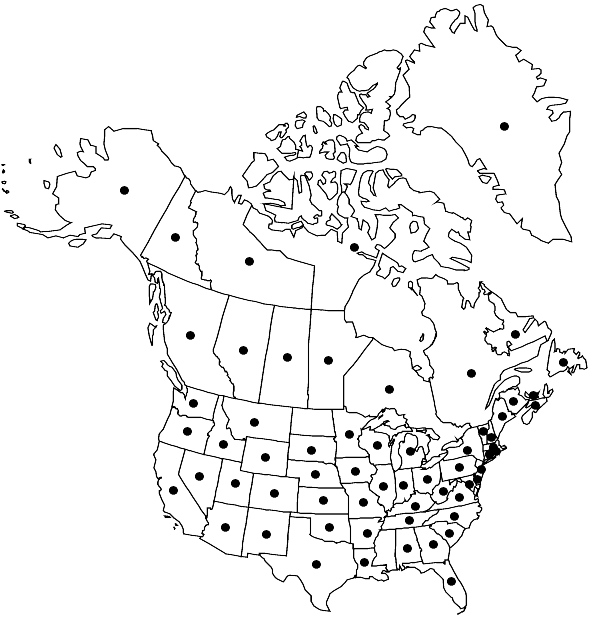Funaria hygrometrica
Sp. Musc. Frond., 172. 1801,.
Plants 4–10 or more mm, with a basal antheridial branch, medium green to yellowish green; leafless proximally with leaves crowded and bulbiform distally, sometimes laxly foliate throughout. Leaves smaller proximally, distal leaves 2–4 mm, deeply concave, oblong-ovate to broadly obovate distally, acute to apiculate or short-acuminate, entire or weakly serrulate distally; costa subpercurrent to short-excurrent; distal laminal cells thin-walled and inflated, hexagonal or oblong-hexagonal becoming much more oblong proximally. Seta usually (12–)20–45(–80) mm, slender and flexuose, usually hygroscopic. Capsule 2–3.5 mm, pyriform, asymmetric, curved to straight, horizontal to pendent or merely inclined or nearly erect, becoming sulcate when dry below the strongly oblique mouth; annulus revoluble, operculum slightly convex; peristome brown, papillose-striate proximally and papillose distally, strongly trabeculate, becoming appendiculate distally, forming a lattice by fusion of the tips; endostome segments lanceolate about 2/3 as long as the teeth, yellowish, finely papillose-striate. Calyptra cucullate, smooth. Spores mostly 12–21 µm, finely papillose.
Distribution

Worldwide except Antarctica.
Discussion
Varieties ca. 20 (2 in the flora).
Funaria hygrometrica is one of the most common, weedy, and widely distributed mosses in the world; its distribution closely parallels that of Bryum argenteum. It is widely illustrated in textbooks to demonstrate the life cycle of a typical moss, possibly because of the abundant conspicuous sporophytes produced and its frequent presence in greenhouses. However, the peristome with opposite, instead of alternate, teeth in the two peristome rows is clearly atypical among the majority of mosses. Most of the varieties that have been described probably do not merit recognition because of the morphological plasticity of the species in response to environmental conditions.
Selected References
None.
Key
| 1 | Capsule 2-3.5 mm, horizontal to pendent, curved, capsule neck less tapered, mouth of capsule narrow | Funaria hygrometrica var. hygrometrica |
| 1 | Capsule 2-3 mm, inclined to nearly erect, straight or weakly curved, capsule narrowly tapered to a long slender neck, mouth of capsule wide. | Funaria hygrometrica var. calvescens |